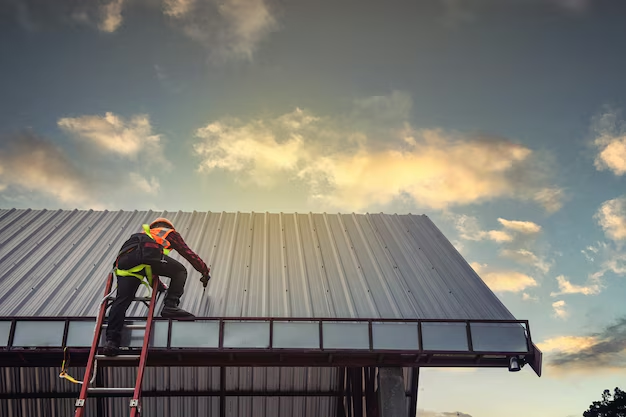Mastering Metal Roofing: A Step-by-Step Guide to Installing Your Metal Roof
Installing a metal roof may seem daunting, but it offers longevity, energy efficiency, and sleek aesthetics that make it well worth the effort. Whether you’re a DIY enthusiast or a homeowner weighing your roofing options, understanding how to install a metal roof can pay dividends. With careful planning and execution, you can achieve a roof that doesn't just shield your home from the elements but also adds significant value. Here’s how you do it.
Preparation and Tools
Before you start, gather all necessary materials and tools. You'll need the metal panels, an underlayment, screws, a drill, measuring tapes, cutting snips, and safety gear. Choose a clear day and ensure your roof structure is sound to support the weight of a metal roof.
Start by removing the old roofing material and inspecting the roof deck for damage. Repair any issues, and ensure the surface is clean and dry.
Measuring and Laying the Underlayment
Measure your roof diligently to calculate the amount of metal roofing needed. Accuracy in this phase ensures minimal waste and costs. Once measured, lay the underlayment starting at the edges, securing it with roofing nails. This underlayment acts as a moisture barrier, enhancing the roof's longevity.
Installing the Metal Panels
Begin at the bottom of the roof, laying the first metal panel to the eave, ensuring it's square to the roof line. Secure it with screws along its ridges, leaving room at the edges for expansion. Overlap each successive panel by about an inch to keep water out. Seal joints meticulously to prevent leaks and align panels accurately to retain aesthetics.
For aesthetic and functional harmony, use ridge and eave flashings. These components cap the roof's peak and eaves, managing water flow and enhancing wind resistance.
Safety Comes First
Remember, installing a metal roof involves safety hazards. Use safety harnesses and equipment effectively to avoid slips. It's crucial never to work alone and to maintain clear communication with anyone assisting you.
Benefits of Metal Roofing
Metal roofs shine with unique benefits: they're environmentally friendly, often featuring recyclable materials, and can be retrofit over existing roofs. Their energy efficiency emerges from deflecting solar radiant heat—lowering cooling costs by up to 25%. Plus, they can last over 50 years with minimal maintenance, offering long-term financial relief.
Transitioning from the practical project of metal roofing to broader financial considerations naturally leads to discussing how to finance such home improvement projects. Fortunately, there are plenty of financial resources available that assist with home renovations.
Exploring Financial Assistance Options
In addition to basic installation guidance, it's crucial to know about financial assistance programs that can turn your roofing plans into reality. Here’s a quick look at some of these programs:
🏠 Federal Housing Administration (FHA) Title I Loans: Ideal for home improvements like roofing upgrades, these loans are straightforward to apply for and offer favorable terms.
💸 Energy Efficient Mortgages (EEMs): A smart choice if your metal roof contributes to energy savings.
🌍 State Incentive Programs: Check local government programs that support renovations promoting sustainability and energy efficiency.
🔧 Veteran Affairs (VA) Loans: If applicable, VA loans offer veterans a supportive path to making home improvements.
📚 DIY Home Upgrade Courses: Invest in online courses for further understanding and confidence in home improvement.
With strategic planning and support from financial assistance programs, installing a metal roof can be a gratifying home improvement venture, paving the way to enhancing property value while fostering financial health.
